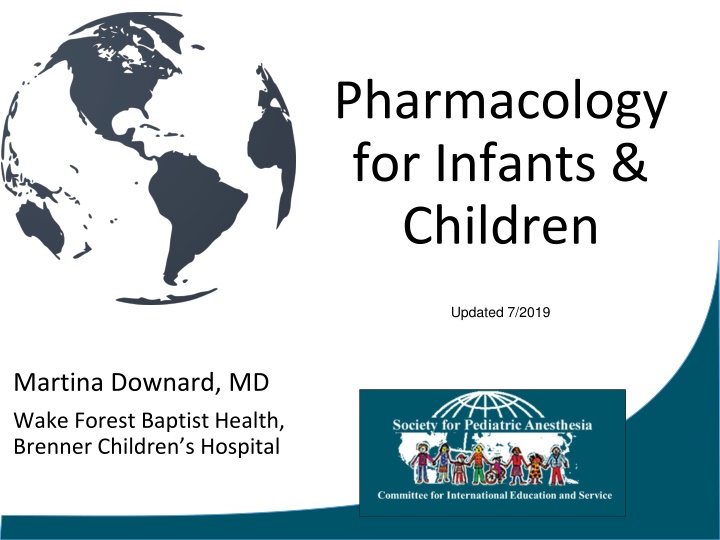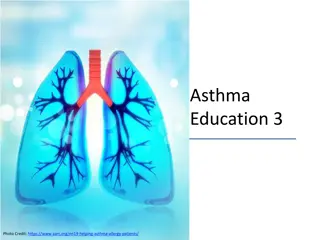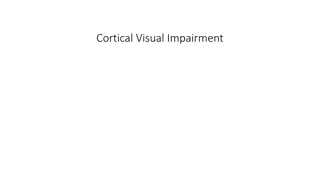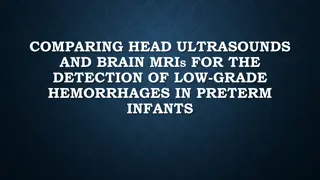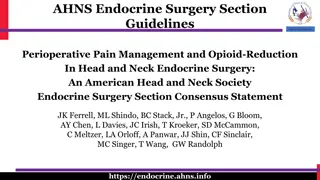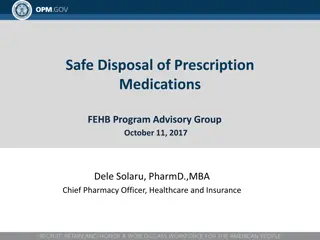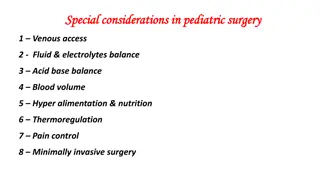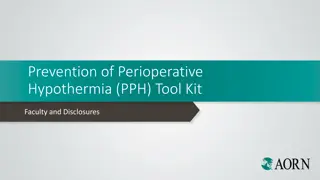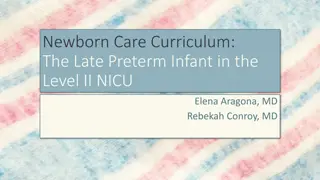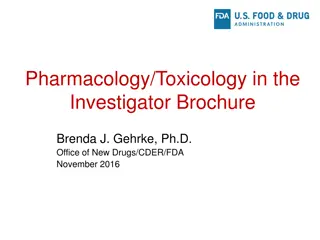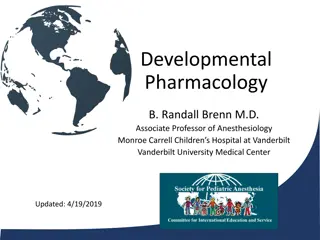Pediatric Pharmacology Update: Perioperative Medications in Infants and Children
Gain insights on frequently used medications in the perioperative period for infants and children, including anesthesia medications. Explore pharmacokinetics, drug distribution in neonates, and the effects of common anesthesia agents on pediatric patients. Understand how immature kidney or liver function, protein binding, and body composition can alter drug responses. Learn about drug interactions with bilirubin and the impact on neonatal health.
Download Presentation

Please find below an Image/Link to download the presentation.
The content on the website is provided AS IS for your information and personal use only. It may not be sold, licensed, or shared on other websites without obtaining consent from the author.If you encounter any issues during the download, it is possible that the publisher has removed the file from their server.
You are allowed to download the files provided on this website for personal or commercial use, subject to the condition that they are used lawfully. All files are the property of their respective owners.
The content on the website is provided AS IS for your information and personal use only. It may not be sold, licensed, or shared on other websites without obtaining consent from the author.
E N D
Presentation Transcript
Pharmacology for Infants & Children Updated 7/2019 Martina Downard, MD Wake Forest Baptist Health, Brenner Children s Hospital
Learning Objectives 1. Increase understanding of frequently used medications in the perioperative period in infants and children 2. Review mechanisms, effects and doses of commonly used anesthesia medications in children
Disclosures No relevant financial relationships
Outline 1. Pharmacokinetics and pharmacodynamics 2. Inhalation anesthetic agents 3. IV anesthetics 4. Neuromuscular blocking drugs and antagonists 5. Opioids 6. NSAIDs & acetaminophen 7. Sedatives: benzodiazepines, dexmedetomidine and chloral hydrate 8. Opioid & benzodiazepine antagonists
Pharmacokinetics & Pharmacodynamics Pharmacokinetics: How the patient/body affects the drug or how drug concentrations in the body change over time - Altered by immature kidney or liver function - Altered by protein binding - Altered by body composition (fat/muscle/total body fluid/ volume of distribution) Pharmacodynamics: How the drug affects the patient/body
Drug distribution in neonates Remember: Acidic drugs bind mostly to albumin, e.g diazepam or barbiturates Basic drugs bind to globulins, lipoproteins, and plasma alpha-1-acid glycoproteins, e.g. lidocaine or alfentanil
Drug distribution in neonates Neonates have reduced total protein & albumin levels result: increase levels & effect from unbound medications Neonates have reduced clearance of drugs from decreased renal/hepatic clearance result: increase medication levels Neonates have increased volume of distribution of drugs (increase in total body water) result: decrease medication levels
Drug distribution Medications can compete with bilirubin to bind to albumin, causing hyperbilirubinemia or kernicterus in neonates Ex. phenytoin, salicylate, caffeine, ceftriaxone, Hypaque (diatrizoate) Changes in tissue binding with maturation Ex. digoxin, opioids
Body composition Preterm & term infants have larger % body water than older children - Result - overall, increased loading dose - larger distribution volumes for water-soluble drugs & smaller for lipophilic drugs Preterm and term infants have less muscle & fat - Less area for redistribution = prolonged peak blood concentrations - Example: opioids with prolonged sedation/respiratory depression
Absorption Slower enteral absorption until 8 months old Larger skin surface area to body size = increased skin absorption - EMLA more likely to cause methemoglobinemia (prilocaine) - Iodine antiseptics likely to cause hypothyroidism
Metabolism Reduced function & blood flow to liver in infants Drugs dependent on liver glucuronidation: - Morphine, acetaminophen, dexmedetomidine, lorazepam - Clearance reaches adult levels ~ 5 - 6 months of age Extrahepatic - Nonspecific esterases in tissues & erythrocytes are mature at birth - No change in remifentanil and succinylcholine clearance
Renal Excretion Glomerular filtration & tubular function fully mature by 12 to 24 months of age Aminoglycoside & cephalosporin antibiotics have prolonged duration of action in neonates
Pharmacokinetics & Pharmacodynamics SUMMARY Decreased circulating protein levels, metabolism and excretion suggest decreasing drug dose Increased volume of distribution & total body water suggest increasing drug dose REALITY dosing of medications in neonates & children requires careful titration
Inhalation agents - MAC MAC = minimum alveolar anesthetic concentration at which 50% patients don t move to noxious stimuli. ** Except Sevoflurane! Peak MAC as full term neonate. Why is MAC altered in children? 1. Change in cerebral blood flow? 2. GABA receptors? 3. Regulation of chloride transporters?
Inhalation agents Wash-in = ratio of alveolar to inspired anesthetic partial pressure (FA/FI) Faster Wash-In in neonates than in adults: Greater alveolar ventilation (VA) to functional residual capacity (FRC) in neonates (5:1) than in adults (1.5:1) Greater percent of cardiac output distributed to vessel-rich groups (brain, heart, kidney, organs) in neonates Neonates have the tissue/blood solubility of adults Reduced blood/gas solubility in neonates
Inhalation agents Second gas effect - When two anesthetics given simultaneously, small concentration of 1 may increase the uptake of the 2nd anesthetic. E.g. nitrous oxide & sevoflurane/isoflurane - Weak effect, if at all Speed of induction determined by: - Solubility of agent less soluble = faster induction - Rate of increase of inspired concentration - Max inspired concentration - Respirations
Inhalation agents Cardiovascular effects: Volatile agents decrease the calcium influx by inhibiting sodium-calcium pumps Neonates more commonly have bradycardia & hypotension with increasing volatile % compared to adults Immature sarcoplasmic reticulum in cardiac cells leading to poor calcium retention and release Increased sensitivity/dependence on calcium for contractility Fewer & less organized contractile elements
Inhalation agents Side effects by volatile agent: Halothane depression of sinoatrial node, slowing myocardial conduction, predispose to ventricular arrhythmias by sensitizing heart to adrenaline Isoflurane & Sevoflurane decrease SVR to decrease BP, blunt baroreceptor responses, no effect on arrhythmias
IV Anesthetic agents Propofol Contains: soybean oil, egg lecithin (yolk), glycerol, EDTA Pediatric IV induction dose: 3-4 mg/kg Pediatric maintenance infusion rate: 200-250 mcg/kg/min Highly lipophilic, pain on injection ( warmth or sunshine on your arm ) Rapid re-distribution, hepatic and extrahepatic clearance (lung, kidney) Associated with less emergence delirium than inhalational agents Associated with a decreased incidence of nausea and vomiting
IV Anesthetic agents Methohexital (brevital) Short-acting barbiturate IV induction dose: 1-2 mg/kg Side effects: - Pain on injection - Hiccups - Seizure-like activity Can also be given rectally as a premedication
IV Anesthetic agents Thiopental Binds GABAAreceptors to prolong chloride channel opening IV induction 3-4 mg/kg Myocardial depressant & weak vasodilator
IV anesthetic agents: Ketamine Ketamine: NMDA receptor Antagonist Effects: - Analgesic & amnestic, dissociative amnesia - Increased HR & BP, little effect on pulmonary artery pressure - Direct cardiac depressant - Bronchodilator May precipitate seizures in susceptible children Side effects: nystagmus, increased secretions, 30% increase intraocular pressure, increased intracranial pressure (cerebral vasodilation) & CMRO2 1 - 3 mg/kg IV, 5-10 mg/kg intramuscular - Doses typically larger in children due to greater clearance than adults - IM dose useful for combative larger children
IV anesthetic agents Etomidate: steroid based hypnotic induction agent 0.2 - 0.3 mg/kg IV, typically 30% increase dose in children due to increased volume of distribution Effects: No effect on hemodynamics Great for head injury or unstable CV status! Side effects: Adrenal suppression Pain on injection Emesis - - - - -
Neuromuscular blocking agents Neonates have increased sensitivity - Neuromuscular transmission immature until 2 months old - Reduction in acetylcholine released - Reduced muscle mass - Reduced clearance Neonate diaphragm function may be more preserved - Type 1 (slow twitch) diaphragm muscle fibers most sensitive to NMBDs - Preterm neonate has only ~10% type 1 fibers - Therefore, diaphragm function may recover earlier than peripheral muscles Infants require larger dose than adults - Larger volume of distribution due to greater total body water & extracellular fluid Neonates - faster onset due to greater cardiac output
Neuromuscular blocking drugs Succinylcholine: depolarizing muscle relaxant Infants more resistant than adults - Rapid redistribution in extracellular fluid volume - Dose: infants ~ 3mg/kg IV/ 5mg/kg IV; children ~1.5 mg/kg IV/ 4mg/kg IM Possible side effects: - Increased masseter muscle tone when given with halothane - masseter spasm potential sign of malignant hyperthermia - Arrhythmia - bradycardia due to choline metabolites; more likely with 2nddose - Hyperkalemia - normal increase K+~ 1 mEq/L; higher in burns, motor neuron lesions & neuromuscular disease - Increased intraocular pressure - Fasciculations
Neuromuscular blocking agents Suggested intubating doses: Infants (mg/kg) Children (mg/kg) muscle relaxant: succinylcholine 3 1.5-2 rocuronium 0.25 - 0.5 0.6 - 1.2 (1.2 for RSI) vecuronium 0.07 - 0.1 0.1 pancuronium 0.1 0.1 cisatracurium 0.1 0.1 - 0.2 atracurium 0.5 0.5 Cote & Lerman s A Practice of Anesthesia for Infants and Children, 5th edition. p122.
Neuromuscular blocking agents- non- depolarizing relaxants Cisatracurium - Spontaneous degradation not dependent on plasma cholinesterase - Faster recovery in children due to greater volume of distribution & total body clearance Vecuronium - Metabolized by liver, excreted in bile - No CV effects Rocuronium - Fastest onset of non-depolarizing relaxants - Can be used for rapid sequence intubation - Metabolized in liver, excreted in urine Pancuronium - Long-acting - > 50% excreted in urine unchanged, 10% in bile - Side effect: tachycardia - blocks presynaptic noradrenaline uptake
Antagonism of muscle relaxants Neonates at greater risk for residual neuromuscular blockade: - - - - Immature neuromuscular system Greater elimination half-life of relaxants Reduced type 1, fatigue resistant, muscle fibers in diaphragm Closing lung volume occurs within tidal volume in neonate (increased alveoli closure) Suggested doses for reversal: - Neostigmine (0.07mg/kg) with atropine (10-20 mcg/kg) or glycopyrrolate 5- 10 mcg/kg Always give atropine or glycopyrolate 1st to avoid bradycardia & cardiac output - or - Sugammadex (2-16 mg/kg) which encapsulates rocuronium to reverse neuromuscular blockade Limited use due to expense $$$$ -
Opioids Morphine Analgesic effect by activating 1 receptor Water soluble, poor lipid soluble High hepatic clearance - metabolized into morphine-3-glucuronide (M3G) & morphine-6-glucuronide (M6G). M6G causes respiratory suppression Reduced liver and renal function causes M3G & M6G accumulation, leading to increased respiratory suppression in children & neonates relative to adults Side effects: itching, nausea Dose: 0.05 - 0.2 mg/kg
Opioids Meperidine Weak opioid, 1/10thstrength of morphine Prolonged elimination time in neonates Mainly used to stop shivering Metabolite, normeperidine, causes seizures No longer recommended for use in children Hydromorphone Synthetic opioid, 5-7.5 more potent than morphine Dose 0.01-0.02 mg/kg IV Metabolites do not cause respiratory suppression
Opioids Methadone Synthetic opioid, similar potency to morphine but greater life Highly variable elimination life in neonates 3.8 - 62 hours Analgesic effect by activating 1 receptor & NMDA receptor antagonist Dose ~0.1-0.2mg/kg Lipid soluble - penetrates blood brain barrier May cause QT prolongation
Opioids Fentanyl Rapid onset, short duration, lipid soluble Potent receptor agonist 70 - 125 times morphine Most commonly used narcotic in infants & children Metabolized by CYP3A4 in liver to non-active metabolites Clearance reduced 70-80% compared to adults May cause chest wall or glottic rigidity after IV push Dose 1-3 mcg/kg (minor surgery) to 100 mcg/kg (cardiac surgery)
Opioids - infusions Sufentanil - - - - Alfentanil - - - - Remifentanil - Rapid onset, brief life (3-6 minutes!!) - Metabolized by nonspecific blood esterases that are mature at birth - Flat context-sensitive time - Dose 0.05-0.3 mcg/kg/min 5-10 times more potent than fentanyl Common infusion for cardiac & spine surgery Metabolized by CYP3A4 Dose 0.3 mcg/kg/hour potency of fentanyl Rapid onset, brief duration of action, more protein bound than fentanyl May also cause chest wall rigidity Dose 0.5-3 mcg/kg/min or 10 mcg/kg for intubation
Opioids Codeine Weak, 1/10thpotency of morphine BUT ~10% metabolized into morphine Analgesia depends on how much is metabolized into morphine Metabolized by CYP2D6 which has many polymorphisms: - poor metabolizers - intermediate metabolizers - ultra-rapid metabolizers (produces the most morphine) May lead to accidental overdose, respiratory suppression to cause death Not recommended for children
Relative Opioid Potencies Drug Potency morphine 1 methadone 1 meperidine 0.1 hydromorphone 5 - 7.5 alfentanil 40 fentanyl 150 sufentanil 1500
Acetaminophen & NSAIDS Acetaminophen/tylenol/paracetamol Inhibits prostaglandin H2 synthetase (PGHS) - no anti-inflammatory effect Doses: 10 - 15 mg/kg PO or IV, 20 - 40 mg/kg PR Toxic metabolite NAPQI binds hepatic macromolecules to cause necrosis - - - NSAIDS Heterogeneous group that all have antipyretic, analgesic and anti- inflammatory effects Inhibit COX-1, COX-2 or both - COX-1 - protects gastric mucosa, regulate renal blood flow, induce platelet aggregation - COX-2 - inflammatory pathway - -
NSAIDS Ketorolac Analgesia similar to low-dose morphine No respiratory suppression Side effects: - Inhibits platelet function & increases bleeding time - Altered bone healing if given in high doses - Bradycardia after rapid IV administration
Sedatives Benzodiazepines: GABA receptor agonists Midazolam Antegrade amnesia Water soluble, no pain on injection Possible respiratory depression & hypotension with co- administration of fentanyl Dose: 0.1 mg/kg IV, 0.5 - 0.75 mg/kg PO, 0.2 mg/kg nasal Diazepam Reduces seizures & muscle spasms Pain on injection Prolonged life in neonates & infants Dose: 0.2 - 0.3 mg/kg IV - - - - - - - -
Sedatives Dexmedetomidine ?2-agonist, affinity 1600:1 specificity ratio for ?2: ?1 7-8 x more affinity than clonidine Decreases sympathetic outflow from CNS by hyperpolarization of noradrenergic neurons in the locus coeruleus No ventilatory depression Shorter elimination life than clonidine, 2 hours vs. 8 hours Effects: - Anxiolysis, analgesia, decrease HR, decrease emergence delirium - Dose: loading IV 1 mcg/kg, infusion 0.5 - 2.0 mcg/kg/hour* - Can be given intranasal 1 - 2 mcg/kg for sedation
Sedatives Chloral hydrate Activates GABA to produce sedation Dose 20-75 mg/kg PO or PR Side effects: airway obstruction, apnea, bradycardia, hypotension Metabolites may be carcinogenic/toxic, leading to metabolic acidosis, renal failure & hypotonia Interferes with bilirubin binding to albumin in neonates Long life - may have re-sedation No longer produced in USA
Antagonists - when your dose goes to far . Naloxone - Opioid antagonist, greatest affinity at ?-receptor - Rapid onset ~30 seconds - Longer life in neonates of 3 hours vs. 1-1.5 hours in adults - Dose: IV 0.25 -0.5 mcg/kg (mild overdose) to 10-100 mcg/kg (severe) - If treating opioid induced respiratory depression, must observe respiratory status minimum of 2 hours after naloxone administration Flumazenil - Competitive antagonist at GABAAreceptor to reverse BZD - Why reverse? excessive sedation or paradoxical response to BZD - Dose: 10 - 25 mcg/kg IV - Short life: ~35 min
Conclusions: Volume of distribution and clearance vary with age Drug doses are frequently age and weight dependent in neonates and children Anesthesia management of infants and children involve careful knowledge of pharmacology and physical development
References: 1. Cote & Lerman s A Practice of Anesthesia for Infants and Children, 5th edition. P 77-149. 2. Smith s Anesthesia for Infants and Children, 8th edition. p 179-261. 3. Mason KP, et al. Incidence and predictors of hypertension during high- dose dexmedetomidine sedation for pediatric MRI. Paediatr Anaesth. 2010 Jun;20(6):516-23. 4. Mason KP, et al. High dose dexmedetomidine as the sole sedative for pediatric MRI. Paediatr Anaesth. 2008 May;18(5):403-11. 5. Wu J, et al. Comparison of propofol and dexmedetomidine techniques in children undergoing magnetic resonance imaging. Paediatr Anaesth 2014 Aug;24(8):813-8.
